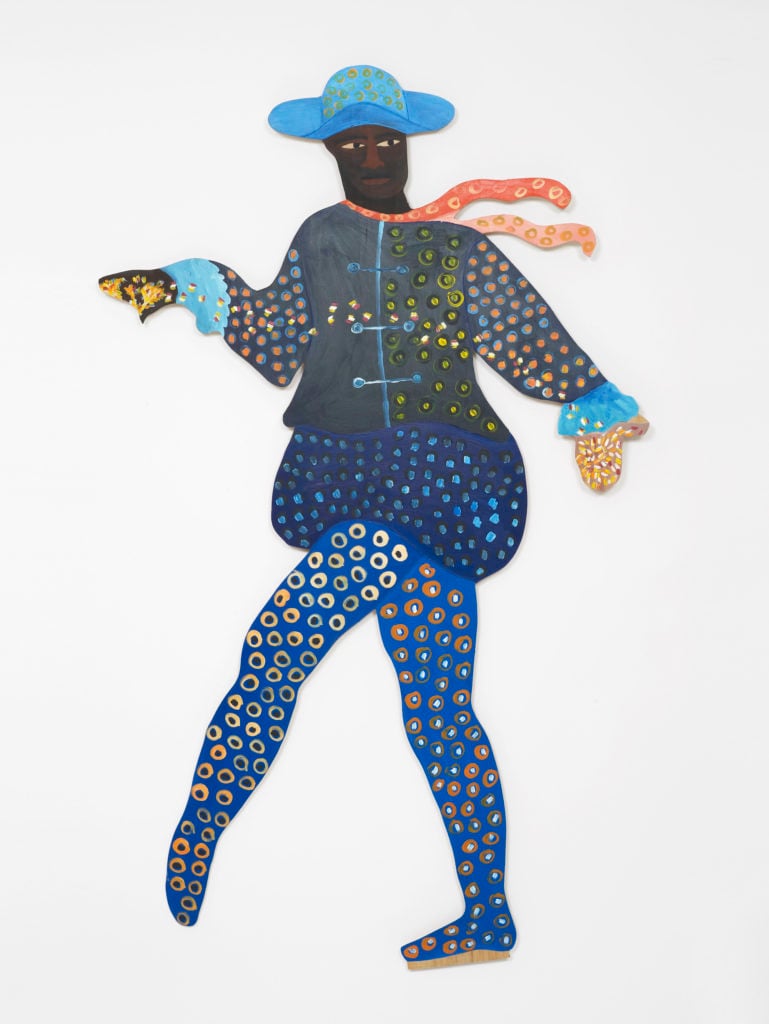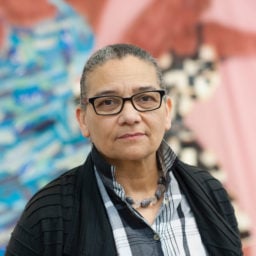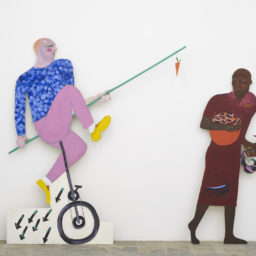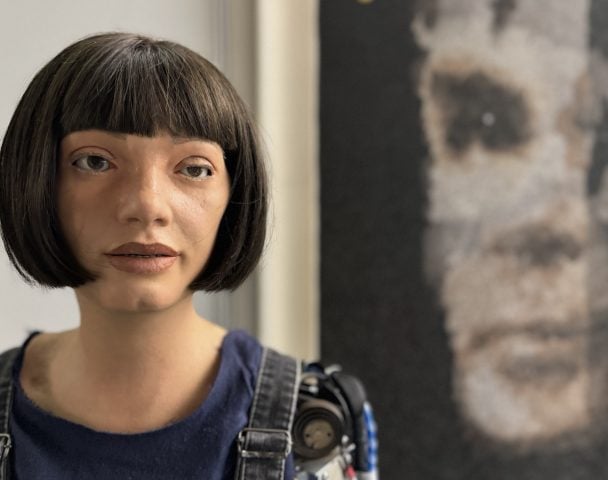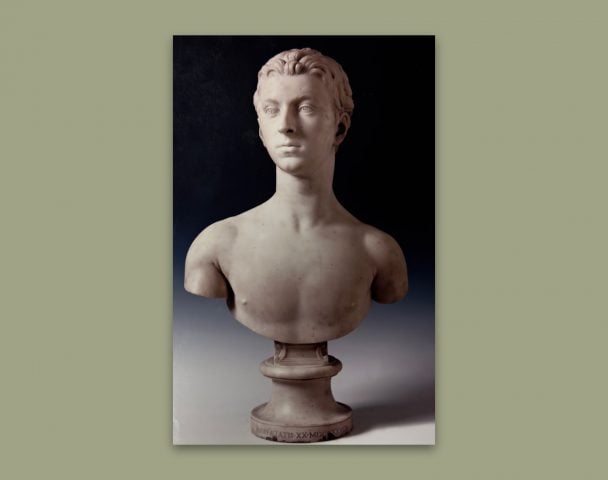A rare collection of 16th-century damask silks hangs in a gallery of the Frans Hals Museum in the Dutch city of Haarlem. These cloths, often referred to as “white gold,” are so delicate and difficult to read that the museum almost never displays them. They are on view, however, because British contemporary artist Lubaina Himid wants them to be.
The display is part of a broader effort on the part of the historic Netherlands museum to reinvigorate its Old Masters collection by presenting it through the eyes of contemporary artists and alongside their work.
Himid is certainly up to the task. In her recently opened exhibition “The Grab Test” at the Frans Hals Museum, the Turner Prize winner’s revisionist oeuvre attempts to reorganize our understanding of history by inserting black voices who have historically been left out, conjuring absent and overlooked views of the past.

Installation view of “The Grab Test” by Lubaina Himid at the Frans Hals Museum. Courtesy the Frans Hals Museum.
The project is exemplary of director Ann Demeester’s programming reboot since taking the helm of the institution in 2014. The director says art history is not linear and that she does not believe in adhering to strict boundaries between fine art and craft. “The history of art is much more chaotic and dirty, and it’s not so clear,” she says. “Art is messy.”
In recent years, Demeester has invited various contemporary artists, including London-based Shezad Dawood, American artist Nina Katchadourian, and UK multimedia artist Marianna Simnett, to reflect on its historic collection by teasing out social and political themes. Last year, the museum also rehung its collection with a new emphasis on questions of migration, cultural appropriation, and identity.
“My idea was to show that art is a continuum, and to acknowledge that there is no such thing as art only belonging to one period, or existing in splendid isolation,” Demeester notes. The results have so far been met with approval from local critics and a increased engagement with the museum on social media.
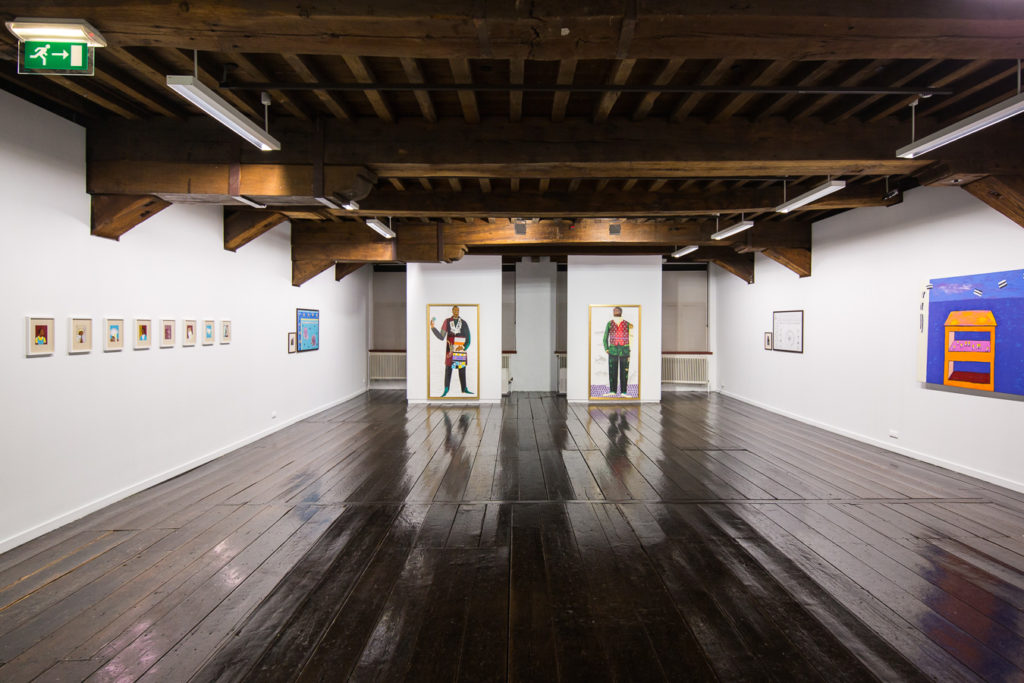
Installation view of “The Grab Test” by Lubaina Himid at the Frans Hals Museum. Courtesy the Frans Hals Museum.
History Within the Folds
Despite the exceptional fragility of the damask silks, the museum adhered to Himid’s desire to display them. The artist wanted to include them in her show because she’s interested in the fluid line between visibility and invisibility, and because the fabrics, a material Himid often works with, tell a story of migration and labor.
In the case of the silks, it is one of migrants and refugees: After the Dutch revolt against Spanish rule of the Low Countries (a region that includes modern-day Netherlands, Flanders, and Belgium) in the 1580s, weavers from Antwerp fled the city for Haarlem, bringing their craftsmanship with them. Damask production was a marriage of these regional skills and local innovation at the time.
According to Demeester, Himid’s work similarly reflects this approach, pulling in strands of history while exploring contemporary themes. The 2017 Turner Prize winner, who was born in Zanzibar and grew up in the UK, became a central figure in the British Black Arts Movement of the 1980s. Her work often incorporates textiles, looking at the stories they tell.
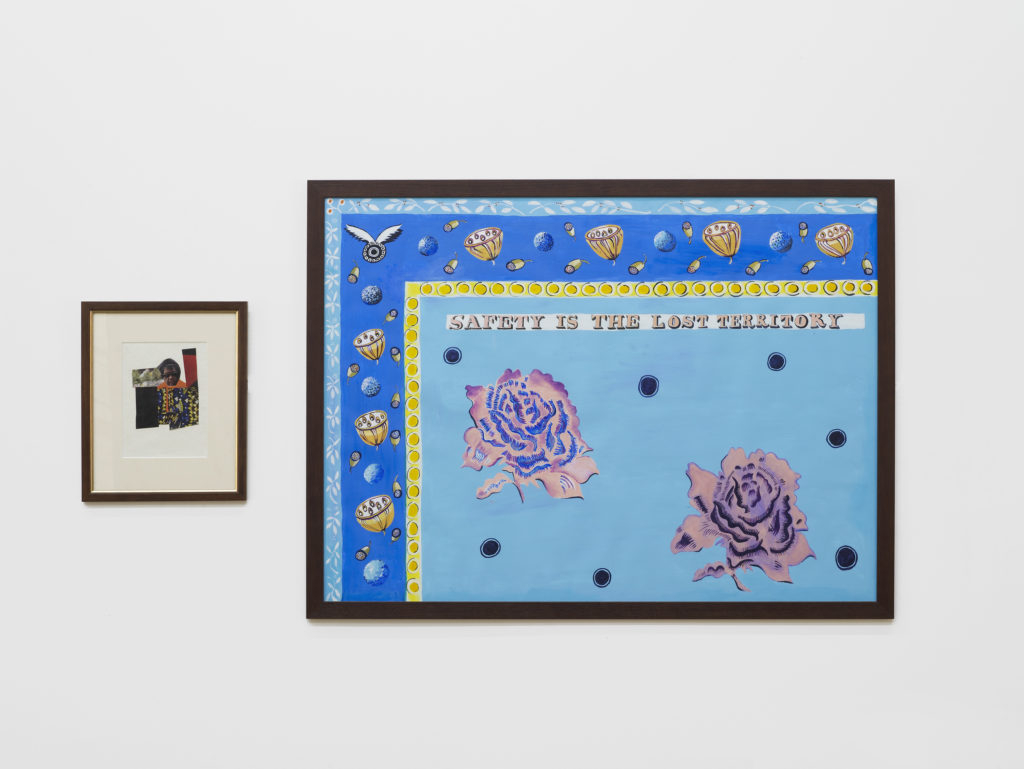
Lubaina Himid’s Safety Is the Lost Territory (2011). Courtesy the artist and Hollybush Gardens.
“We want to connect Old Masters to the present to say that there is no such thing as dead heritage,” says Demeester. “At the same time, the contemporary art that many people regard as alienated or alienating is often deeply connected to the past. We hope that more meanings and more stories are being generated by those combinations.”
For the central piece of the exhibition at the Frans Hals, Himid has put another form of cloth center stage, this time her own: The Grab Test from 2019 is a newly commissioned work after which the whole exhibition is titled. It features a series of connected Dutch Wax cloths, a traditional fabric printed with colorful and elaborate prints, that hang in the middle of a gallery chamber and wrap around its interior columns. She has painted her own figures, such as birds, flowers, and hands, in acrylics onto the piece.
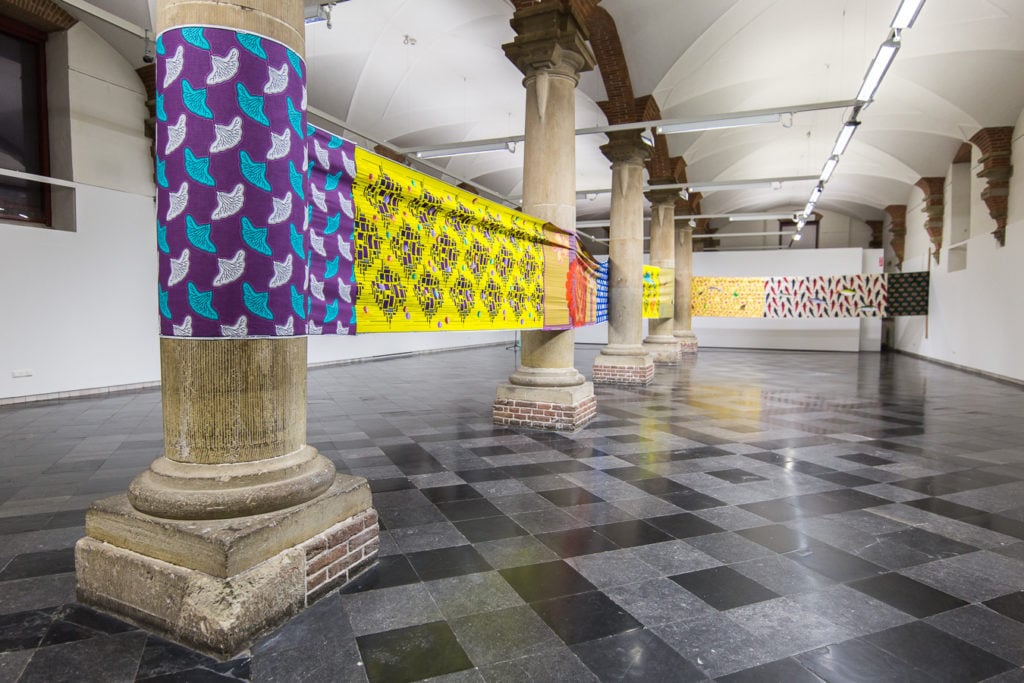
Installation view of “The Grab Test” by Lubaina Himid at the Frans Hals Museum. Courtesy the Frans Hals Museum.
Not unlike the damask silks Himid had pulled out of storage, Dutch wax also has a multi-layered history: It was created in the Netherlands in the 1800s as a way of mass-producing Indonesian batiks, during the period of Dutch colonial rule in what was then known as the Dutch East Indies. Ghanaian soldiers who served in World War I in the Dutch colonial army in Indonesia first popularized them in Ghana. Today, they are so popular in West Africa that many people simply think of them as a quintessentially African material.
“All these ideas of circulation, migration, appropriation are integral to the textile itself,” says Demeester. “It raises questions like, what belongs to a certain continent and what is brought there? Dutch wax is about shopping and about identity and the patterns are sometimes symbolic. These are all subjects that interest Lubaina.”
The exhibition also includes 10 life-size figurines from her monumental multimedia installation Naming the Money (2004), which consists of 100 wooden cut-outs depicting fictional black historical figures, each inspired by a unique swatch of fabric that hangs on the back of each cut-out alongside a poem about the character. Jazz music plays with voice-overs telling the stories of each one.
“This particular work was responding to the fact that she looked at 17th- and 18th-century portraiture and saw that black people were not really there,” said Melanie Bühler, curator of the exhibition. “Or if they were they were there, they were only there to highlight the status of the white protagonist or in a subservient role. She invented lives for these de-individualized persons, and gave them life again, gave them individuality.”
Lubaina Himid’s “The Grab Test” is on view at the Frans Hals Museum in Haarlem, the Netherlands, until February 23, 2020.
